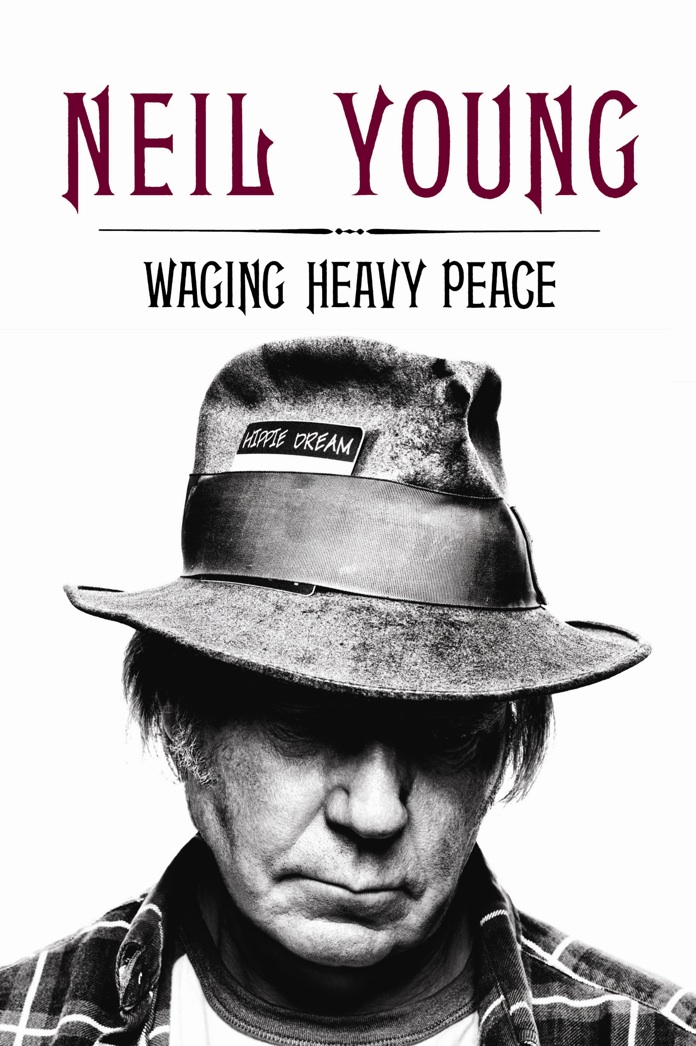
Neil Young
Waging Heavy Peace: A Hippie Dream
Published by Blue Rider Press
Jan 03, 2013
Web Exclusive
![]()
One hundred seventy-three pages into Neil Young’s autobiography, he makes an admission that is glaringly obvious to anyone who read that far. “I am not interested in form for form’s sake,” states Young. “So if you are having trouble reading this, give it to someone else.”
Waging Heavy Peace is, through its first few hundred pages, a bit of a difficult read. It is not because of poor writing or exhaustive detail, but Young’s memoir begins as something of a struggle because one is not used to the style he adopts to tell his story. Chronology is discarded completely, with Young choosing to eschew the linear narrative for a conversational and tone that seems rambling at first. He darts among topics and decades with seeming disregard for any typical biographical “form,” and thus it often seems that he hashes and rehashes topics, such as his love of cars or his preoccupation with improving the sound quality of digital music (his music service, Pono, is on its way to fruition), no matter where he seems to otherwise be, content-wise, in the text. Thus, one hoping for linearly presented tales of his early days with The Squires and The Mynah Birds, the’60s glory days, his ‘80s experimentalism, or his ‘90s revival is out of luck.
However, a strange thing happens at about the time of Young’s aforementioned revelation. The reader starts to abandon his or her preconceived notions of what the book should be and begins to fall into a groove with what the book is. And it carries the reader through to the last of Waging Heavy Peace‘s 497 pages. Stories from the previously mentioned time periods are prevalent. This is not Bob Dylan’s Chronicles; Young provides the reader with at least most, if not all, of what he or she desires. And yes, Pono, cars, and trains are dealt with in equal measure. But what Waging Heavy Peace ultimately becomes is a conversation. One is drawn in, as if he or she is having a personal discussion with an idol. And to this effect, the book becomes highly engaging, individualistic, and ultimately one-of-a-kind. One learns of Young’s musical exploits. But perhaps even more interestingly, one learns of the value he places on friendship, the love he has for his children (the way he writes of his son Ben, who was born nonverbal and quadriplegic, is particularly heart-warming), and of his unending search for betterment.
Yes, Young’s history has been enough to fill volumes. And to that end, Young even makes mention of writing another book. But if the author chooses to pen not one more word to paper, one can be thankful. With Waging Heavy Peace, Young lets us all know him a little better. It’s a fascinating journey. Form be damned. (www.neilyoung.com)
Author rating: 8/10
Average reader rating: 9/10
Current Issue

Issue #72
Apr 19, 2024 Issue #72 - The ‘90s Issue with The Cardigans and Thurston Moore
Most Recent
- Maggie Rogers @ House Of Blues, Chicago, US, April 19, 2024 (Review) —
- 10 Best Songs of the Week: Nilüfer Yanya, Linn Koch-Emmery, Fat Dog, Crumb, St. Vincent, and More (News) —
- Fat Dog Announce New Album and Tour, Share Video for New Song “Running” (News) —
- The Obsessed, Howling Giant @ Brooklyn Meadows, NYC, April 12, 2024 (Review) —
- Premiere: Slow Joy Releases New Single and Video for “King Cowboy” (News) —

Comments
Submit your comment
There are no comments for this entry yet.